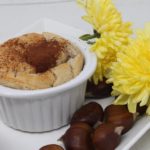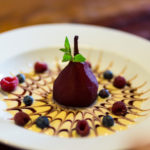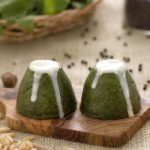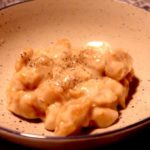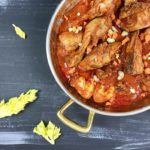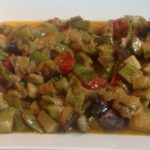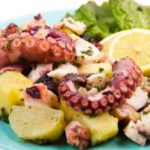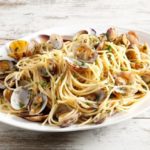CHOCOLATE TRUFFLES, TURIN STYLE

These chocolate truffles are lovely special presents to give at Christmas time: there is nothing like a homemade gift for our families and friends to express our love for them.
The combination of chocolate, rum, coffee, and Amaretti cookies is reminiscent of Turin’s Bonet. These chocolate truffles are very festive and particularly appropriate to celebrate the winter holidays. The dark chocolate can be replaced with white chocolate and you can play with different ingredients to make the most of their versatility.
These chocolate delicacies have a very “exotic” yet transalpine touch. Piedmont cuisine is deeply influenced by its proximity with France, and not only because of geography; in fact, the Savoy dynasty, which ruled Italy until the end of WW2, was blood related to the French dynasty. Not only did the Savoy family try to compete with its French cousins in building palaces that wanted to resemble Versailles, but the two languages spoken in the parliament of Turin were French and the Turin dialect, until the constitution of the Kingdom of Italy.
Prep Time: 20 minutes | Cooking Time: 10 minutes | Total Time: 2 1/4 hours (including chilling time)| Yield: Makes 20-25 truffles.
Ingredients
- 2/3 cup (250 ml.) heavy (fresh whipping) cream
- 1 tablespoon (8 gr.) instant espresso coffee
- 1 tablespoon (15 ml.) dark rum
- 12 ounces (350 gr.) Good-quality finely chopped semisweet chocolate, or chocolate chips
- 4 ounces (80 gr.) amaretti cookies
Instructions
Set a heat-safe medium bowl over a medium saucepan filled with an inch or two of water (the bottom of the bowl should not touch the water in the pot). Heat over medium heat until water is simmering, then add cream to bowl and heat until warm, about 3 minutes. Add instant coffee and chocolate and cook, stirring constantly, until melted, about 3 minutes (or up to 5 minutes if using chocolate chips).
Carefully remove the bowl from the saucepan and pour chocolate mixture into a second heatproof bowl or pie pan (preferably made from metal, since it cools more quickly). Add the rum and mix carefully. Let cool at room temperature 15 minutes, then freeze until truffle base is firm, about 1 hour.
Line a baking sheet with parchment or wax paper. Once chocolate mixture has chilled, use a teaspoon, melon baller, or small scoop to drop truffle mixture by the heaping teaspoonful onto the prepared sheet. Form truffles into balls by rolling them quickly between the palms of your hands. This process is a little messy, so wash your hands in cold water halfway through rolling, if desired. Freeze truffles on prepared sheet for 20 minutes.
Topping:
With a blender or food processor, finely chop the cookies and pour the powder in a plate.
Once chilled, roll truffles in the topping pressing slightly to adhere the ingredients to the truffles. Store finished truffles in the refrigerator up to 5 days; remove to room temperature for 15 minutes before serving.
Note: if you do not find amaretti cookies or do not like them, you can replace them with chocolate powder, shredded almonds, grated pistachios or hazelnuts.
